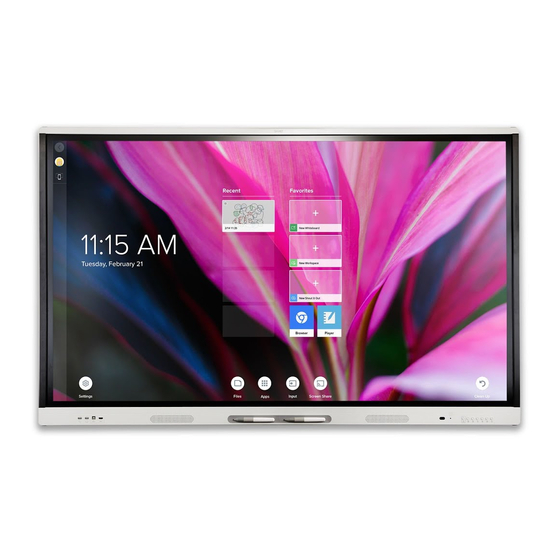
SMART Board MX Series User Manual
Hide thumbs
Also See for Board MX Series:
- Installation and maintenance manual (115 pages) ,
- Instruction for installation and maintenance (90 pages) ,
- User manual (51 pages)
Table of Contents
Advertisement
Quick Links
SMART Board MX (V4) series
SMART Board MX (V3) series
SMART Board MX (V2-C) series
SMART Board MX (V2) series
IDX55-4
|
IDX65-4
|
IDX75-4
|
IDX86-4
Was this document helpful?
smarttech.com/docfeedback/171554
SMART Board
MX
|
MX Pro
series interactive displays
User guide
|
|
|
|
SMART Board MX series
(See page 13 for specific models.)
|
IDX55-3
|
IDX65-3
|
IDX75-3
|
IDX86-3
®
SMART Board MX Pro (V4) series
SMART Board MX Pro (V3) series
SMART Board MX Pro (V2-C) series
SMART Board MX Pro (V2) series
|
IDX55-2
|
IDX65-2
|
IDX75-2
|
IDX86-2
|
IDX65-1
|
IDX75-1
|
IDX86-1
Advertisement
Chapters
Table of Contents

















Need help?
Do you have a question about the Board MX Series and is the answer not in the manual?
Questions and answers
We had a teacher that setup the board (SMART MX) for a class, walked away and the class was cancelled. Several hours later another teacher came to the class but the board was locked and the first teacher was unavailable to unlock. They needed to power reset the board to use it. Is there any way other users could use the board if it has been previously locked, without rebooting?
No, other users cannot unlock a SMART MX board that has been previously locked without user presence. Unlocking requires a user to be present with the device.
This answer is automatically generated